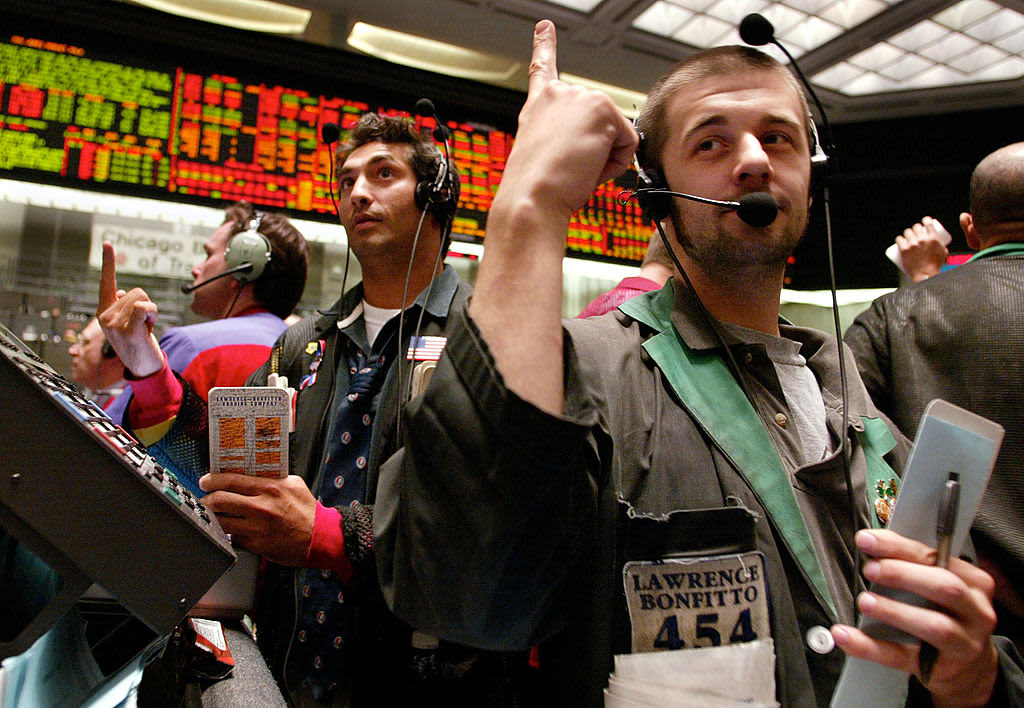
The 10-year U.S. Treasury yield jumped above 1.7% on Thursday, its highest level in more than a year, despite reassurance from the Federal Reserve that it had no plans to hike interest rates anytime soon, nor taper its bond-buying program.
The yield on the benchmark 10-year Treasury note was up 8 basis points to 1.719%. The yield on the 30-year Treasury bond climbed 3 basis points to 2.472%. Yields move inversely to prices. (1 basis point equals 0.01%.)
Yields retreated from their highs of the day in afternoon trading. The 10-year broke above 1.75% earlier in the session, marking its highest level since Jan. 24, 2020, when it topped out at 1.762%. This is also the first time the 30-year has traded above 2.5% since August 2019.
Guy LeBas, chief fixed income strategist at Janney Montgomery Scott, described the move as a “belated overreaction” to the Fed’s projections and Jerome Powell’s statements on Wednesday.
“The realization in the fixed income market really is around commitment that Fed policy is going to be easy for some time and allow for yields to rise. That’s not a new theme,” said LeBas.
After the Fed’s two-day policy meeting concluded Wednesday, the central bank said it sees stronger economic growth than previously estimated, forecasting gross domestic product to rise to 6.5% in 2021. This is up from the 4.2% GDP increase forecast in December.
The Fed also expects core inflation to hit 2.2% this year, but has a long-run expectation of it sticking around 2%. The central bank also indicated that it didn’t plan to hike interest rates through 2023 and that it would continue its program of buying at least $120 billion of bonds a month.
These projections reinforced the idea that the Fed is willing to let the economy run hot for a period of time to allow the U.S. to recover from the Covid pandemic. Bond investors fear this means the central bank will let inflation increase more than normal, eroding the value in bonds.
Some strategists have pointed to overseas developments as a reason for Thursday’s spike in yields. The Bank of Japan is expected to widen a band around its long-term rate target, according to the Nikkei newspaper, signaling a step toward tighter policy.
“I think Japan had a lot to do with it because if you pull up a tick chart … the jump from where we were, 1.66ish, to 1.73 or 4 happened in a really short period of time right as the Japan information was coming out,” said Kathy Jones, the chief fixed income strategist for the Schwab Center for Financial Research. “I think that was the catalyst, and I suspect it might have caught some people positioned the wrong way and then, it is an uptrend in yields, so other traders are going to jump on the bandwagon when you get a breakout like that.”
There has been some concerns that the recent rise in bond yields and inflation expectations could mean a repeat of the 2013 “taper tantrum.” This was when Treasury yields spiked suddenly because of market panic after the Fed said it planned to start tapering its quantitative easing program.
However, Willem Sels, chief investment officer for private banking and wealth management at HSBC, said the Fed’s message of a gradual normalization of policy meant this was a “very different situation than 2013, where bond tapering caught the market by surprise, leading the real yield to spike quickly and significantly, and causing equities, gold and risk assets to sell off.”
Initial jobless claims for the prior week came in a worse-than-expected 770,000 on Thursday, but the Philly Fed’s manufacturing outlook survey was better than expected.
Auctions were held Thursday for $40 billion of four-week bills, $40 billion of eight-week bills and $13 billion of 9-year 10-month Treasury Inflation-Protected Securities.
— CNBC’s Thomas Franck contributed to this report.




